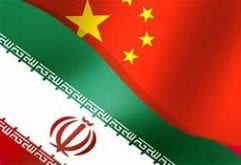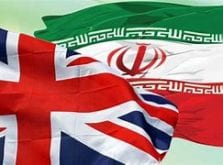iranintl – The IRGC-affiliated Fars news website claimed a turnout of more than 40% after polls closed at midnight in Iran’s controversial elections, despite numerous reports indicating lackluster participation.
The Fars reportestablished a narrative that other outlets hesitated to challenge. Shortly after vote counting commenced, the state news agency IRNA also claimed a turnout of 41%. Compared to the official participation rate of 42.57% in 2020, the government figures aimed to demonstrate that the Mahsa Movement has had minimal impact on the regime’s legitimacy and popularity, even with less than 50% of eligible voters participating.
The regime’s propaganda apparatus and election officials had worked diligently to gradually legitimize this inflated number in the public eye. In late February, IRIB reported survey results indicating a 43% voter turnout expectation. ISPA’s data three days before election day echoed this sentiment, projecting a 41% turnout. Thus, the claim of “more than 40%” seemed a calculated attempt to maintain the consistency of past rigged elections, without resorting to an overt falsehood like 60%. This modest deception aligns with a regime that boasts of 50 million attendees at its anniversary, presenting a relatively modest distortion.
Just hours before Fars News released its turnout figures, the Tehran governor implicitly threatened to prosecute anyone discussing turnout before the IRGC’s outlet did so: “Anyone who comments on the participation rate in the elections is speculating individually and bears the responsibility alone.”
However, the claim of “more than 40%” seems dubious for two reasons. First, three pre-election surveys indicated national participation rates of 35% or less. Internal estimates by Mohammad Reza Bahonar put national participation at 35%, with Tehran at 17%. Gamaan’s latest survey suggested only 25 to 30% of eligible voters intended to participate. Additionally, Statis Consulting’s survey projected a record-low turnout of 34%. The average of these figures, at 33%, is significantly lower than both the Fars News and IRNA numbers, with the margin of error typically between 1-3 percent.
Even the statistics indicating 35%, 30%, or 34% participation in what many view as sham elections should be viewed skeptically. In a police state, where individuals fear surveillance, some may falsely claim participation over the phone, rendering such polls unreliable.
Another reason for skepticism lies in the lack of enthusiasm evident before election day, with reports of empty polling stations during supposed peak times.
Officials maintained the participation rate of Tehran at ballot boxes compared to the previous term (24%), implying political continuity from four years ago. However, the reported increase in participation in Alborz province (up to 30%), adjacent to Tehran, seems implausible given the region’s activism during the 2022 protests.
Regarding the new Majles composition, it was evident from the start that the Guardian Council, Khamenei’s office, and IRGC sought to maintain the status quo. Disqualifications were intended to secure this outcome, and early results confirm this expectation.
Two unexpected developments emerged: Mohammad Reza Bahonar’s loss in Kerman province, potentially challenging parliament speaker Mohammad Bagher Ghalibaf for the speakership, and former president Mohammad Khatami’s decision to refrain from visiting polling stations, despite his ongoing encouragement for people to vote following the 2009 presidential elections.
 Shabtabnews In this dark night, I have lost my way – Arise from a corner, oh you the star of guidance.
Shabtabnews In this dark night, I have lost my way – Arise from a corner, oh you the star of guidance.



